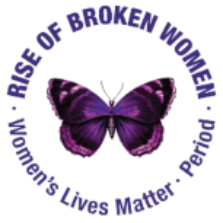Basic Facts

New York City Homelessness: The Basic Facts
The basic facts mean making chances you have walked by or shared a train car with someone homeless, know someone personally who has been homeless, or even experienced homelessness yourself daily is not only likely but a reality.
Today, more New Yorkers are experiencing homelessness than ever before.
In New York City more than 8.4 million people, nearly one in every 125 New Yorkers are homeless — that’s nearly 70,000 men, women, and children.
Every night, approximately 4,000 people sleep on the street, in the subway system, or in other public spaces. However, the vast majority of New Yorkers experiencing homelessness spend the night within New York City’s shelter system where they remain unseen.
For every person sleeping on sidewalks or trains, 17 more are sleeping in shelters. And nearby metro areas such as Newark have smaller but persistent populations of individuals experiencing homelessness.
The skyrocketing rents and minimal wage growth put pressure on families with limited resources. Sixty percent of these New Yorkers say they don’t have enough emergency savings to cover at least 3 months’ worth of expenses, like food and rent.  And nearly 20% of New York City residents already live below the poverty line (earning less than $24,300 for a family of four).
And nearly 20% of New York City residents already live below the poverty line (earning less than $24,300 for a family of four).
Poverty in New York City hugely affects children: nearly 1 in 3 people living below the poverty line is a child. Poverty also tends to be concentrated in neighborhoods with low-performing schools and high rates of violence, unemployment, substance abuse, and teen pregnancy. All of this has negative effects on child development and well-being, and conclusively perpetuates cycles of poverty and inequality.
Adults
In the New York City metro area, homelessness is at an all-time high.
WHERE ARE CHILDREN AT RISK?
The South Bronx and East Harlem in New York City, among many neighborhoods, suffer from concentrated poverty. Overwhelmed with high crime rates, poor health outcomes, and poor housing conditions, these areas pose high risks for child welfare.
Hundreds of studies have examined the detrimental effects of poverty on the well-being of children. Growing up in poverty may disturb a child’s brain development and undermine his/her social and emotional growth.
HOW CAN POVERTY BE ADDRESSED?
Opportunities for enrichment and mentoring can play a critical role in helping children thrive in school and life. Quality programs support children’s social and emotional development, helping them grow into healthy, grounded, and economically self-sufficient. (THE POINTS DON’T EXPLAIN HOW TO ADDRESS)
- Research shows that, compared to homeless families, homeless single adults have much higher rates of serious mental illness, addiction disorders, and other severe health problems. ANSWER- SELF CENTERS W VOLUNTEERS NOT TIED TO MONEY INDUSTRIES THAT INFORM OF FREE TO LOW RENT HOUSING IN NEWLY BUILT NEIGHBORHOOD ZONES
- Each night thousands of unsheltered homeless people sleep on New York City streets, in the subway system, and in other public spaces. There is no accurate measurement of New York City’s unsheltered homeless population, and recent City surveys significantly underestimate the number of unsheltered homeless New Yorkers. ANSWER-CREATE SAFE ZONES W VETTED VOLUNTEERS TO PROVIDE PLACES THROUGH WORD OF MOUTH AS VIABLE PLACES FOR SHELTER WITHOUT SCRUTINY
- Studies show that the large majority of street homeless New Yorkers are people living with mental illness or other severe health problems.
The Rise of Broken Women is making changes to this situation by one period at a time, by creating awareness and delivering menstrual hygiene products to all women and girls in need.
